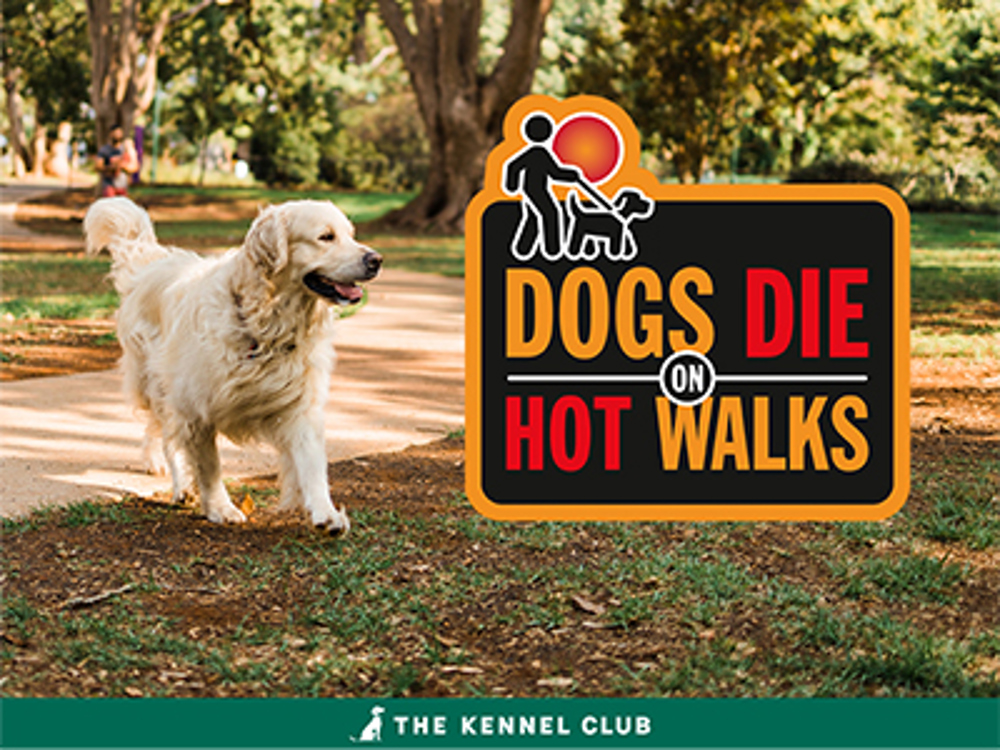
The most common cause of heatstroke in dogs is from exercise. Heatstroke can happen within minutes, which is why it's incredibly important to make sure your dog isn’t too hot when you’re walking them during warm weather.
If you are going to walk your dog on a hot day, remember:
- Walk your dog in the early morning or evening and avoid the midday sun
- Always carry water and something for your dog to drink from
- Consider attaching a lead to a walking harness rather than to their collar. Leads that pull on a collar can press on their airways and stop them from cooling down as effectively. Remember that it’s a legal requirement for a dog to wear a collar with their owner’s name and address on it when out in public
- Take care when exercising any unwell or dehydrated dogs on hot or warm days, as they may find it more difficult to control their body temperature
- Know the signs of heatstroke and watch out for them
- Remember that pavements on hot days can burn your dog’s footpads, so try to avoid them. If it’s too painful for you to place the back of your hand on the pavement for seven seconds then it’s too painful for your dog to walk on
Is it dangerous to walk your dog on a warm day?
What temperature is too hot?
Most dogs are comfortable at temperatures between 15-25°C, but this is very much dependent on their age, breed, size, coat length, amount of exercise they're engaging in, health and fitness. Some dogs may struggle to maintain a low body temperature, even in lower temperatures.
If I take water with me, is it OK to still walk my dog when it’s hot?
Giving your dog a drink during a walk will help to keep them hydrated and cooler, but heatstroke can still happen, even if they have access to water.
What are the signs a dog has heatstroke?
Below is a list of possible signs of heatstroke to be aware of:
- Heavy panting, even when not exercising
- Breathing problems, particularly in flat-faced dogs
- Tiredness
- Stiffness or an unwillingness to move
- Dribbling
- Confusion
- Being sick, can be bloody
- Upset stomach, can be bloody
- Not walking in a straight line
- Collapse
If you think your dog may have heatstroke it is vital that you immediately contact your vet, ideally while trying to cool them down. Getting early advice and treatment is essential to saving a dog’s life. Research has found that 1 in 7 dogs in the UK that are taken to vets with heatstroke die, but 98% that are seen early with mild signs of heatstroke are likely to survive.
Find out more about heatstroke, whether your dog is at increased risk, how to prevent it and when it's most likely to occur.
Tips on how to help a dog with heatstroke
- Stop them exercising, move them out of the heat and into the shade
- Call a vet for advice
- Lay them down on a cool floor
- Offer them small amounts of water to drink
- Carefully pour water over the dog’s body, or sponge them if water is limited. Particularly focus on their neck, tummy and inner thighs. Ideally continue to do this until their breathing returns to normal. Make sure the dog doesn’t inhale any water while you’re trying to cool them down
- Fan them with cool air or put them in an air-conditioned room or car if possible. The impact of fanning them, or putting them somewhere that’s air-conditioned, will be greatest if they’re already wet
It was previously thought that rapidly cooling an affected dog could cause them to go into shock. This advice is now being questioned, so always speak to your vet who can guide you through how best to help your dog.
